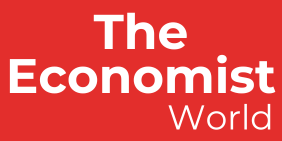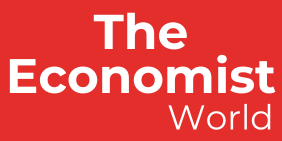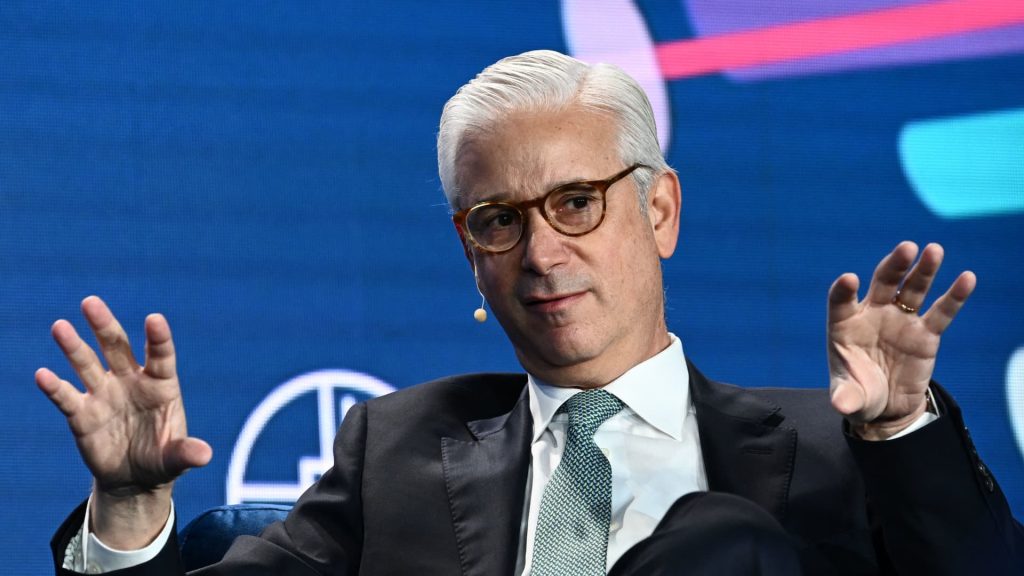Post Views: 88
Wells Fargo on Friday morning reported a mixed first quarter with misses across key revenue lines, offset by lower expenses and better provisions. While the economic outlook remains cloudy due to tariffs and trade wars, we’re willing to look through these results because of a key catalyst on the horizon. Total revenue for the three months ended March 31 fell 3.4% year over year to $20.15 billion — missing analysts’ expectations of $20.75 billion, according to market data provider LSEG. Earnings per share of $1.39 per share exceeded Wall Street’s consensus estimate of $1.24 per share, LSEG data showed. On an adjusted basis, the bank earnings $1.33 per share. This excludes a 6-cent per share gain on a previously announced sale of its non-agency third-party servicing segment. WFC YTD mountain Wells Fargo YTD Shares were down roughly 1% under $63 each in late afternoon trading in what has been a volatile day in the market. The stock has dropped roughly 10% year to date. It’s off 22% from its record-high close of $81.40 on Feb. 6. Bottom line Wells Fargo may be off to a slower start to the year than we expected, but we continue to appreciate the changes the bank has made under Charlie Scharf who became CEO in 2019. As Piper Sandler put it earlier this week when upgrading Wells Fargo to an overweight buy rating, the bank is “clearly making the transition from defense to offense.” The analysts cited as evidence Wells Fargo’s investment banking gains, push into credit cards, improvement in its auto business, and progress in fee-generating businesses. Or as we’ve put it before, Scharf has reduced Wells Fargo’s bloated cost structure, improved risk and controls, invested in technology, and diversified revenue with more fee-based streams to reduce the bank’s reliance on net interest income (NII). These changes have required a lot of heavy lifting, which is why we are hesitant to judge Wells Fargo on a quarter-to-quarter basis. Our focus is on the bigger picture. While making tangible progress on its turnaround, Wells Fargo and all the big banks will struggle in an economic downturn. During the post-earnings conference call, Scharf had this to say about the impact of the current trade wars on consumer sentiment: “People are certainly, taking stock of what it means, figuring out where to sit and wait and where to continue to move forward.” “I think there is still a hope that the positives of regulation, positives of tax reform, the long-term positives of changes in trade can put us in a position to feel better about the future and a growing economy,” he continued. “But, people are cautious, So I just kind of put it, put it in the wait and see category, cautious in the shorter term, but, probably still bullish for the longer term.” Why we own it We bought Wells Fargo as a turnaround story under CEO Charlie Scharf. He’s been making progress cleaning up the bank’s act and fixing its previously bloated cost structure after a series of misdeeds before his tenure. Scharf has also been working to get the Fed’s $1.95 trillion asset cap lifted and to boost Wells Fargo’s fee-generating revenue streams. Competitors : Bank of America and Citigroup Weight in Club portfolio : 4.3% Most recent buy : Aug. 7, 2024 Initiated : Jan. 8, 2021 However, we think Wells Fargo should be in a relatively better position to weather the storm. It’s got a strong balance sheet and excess capital, and management has had to prudently manage its credit levels to remain compliant with the Federal Reserve-imposed $1.95 trillion asset cap. As for that asset cap, media reports earlier this year have suggested that the cap, imposed in 2018 after a series of scandals that pre-dated Scharf, could be removed this year. The removal of the cap represents a significant catalyst event that will improve the bank’s ability to improve the returns it makes on its capital. There’s no real timeline of when it will be lifted, but the bank has done a tremendous job improving its regulatory and risk management as evidenced by the five consent orders that have closed this year. One underappreciated aspect of closing out these consent orders is that it frees up management time and a lot of internal and external resources that can be reallocated elsewhere. Scharf was also upbeat on the conference call about the regulatory and supervision backdrop under the current administration. While reiterating our buy-equivalent 1 rating on Wells Fargo, we recognize that the market and bank stocks have come considerably in the face of President Donald Trump’s tariffs. Therefore, we’re lowering our price target on Wells Fargo shares to $75 each from $84. Bank earnings Financials, like they always do, kicked off earnings season Friday. Club name BlackRock reported before the bell — it, too, delivered solid results in a tough market. Fellow Club financials, Goldman Sachs and Capital One report their earnings on Monday morning and April 22, respectively. Commentary Net Interest Income declined 6% from last year to $11.5 billion, missing the consensus estimate of $11.78 billion. The bank’s net interest margin – which measures the difference in what the bank receives in interest on loans and pays out on deposits – was 2.67%, below estimates of 2.72%. The bank cited the impact of lower interest rates on floating rate assets, deposit mix and pricing changes, lower loan balances, and one fewer day in the quarter as reasons why NII declined from last year. Wells Fargo’s period-end loans were about flat from the fourth quarter, with a 1% decline in consumer loans offset by a 1% increase in commercial loans, which was something the company was particularly encouraged about. Total deposits were down about 1% from the fourth quarter. Non-interest income was roughly flat versus last year at $8.65 billion but missed the consensus estimate of $8.9 billion. The bank grew revenue over the first quarter of 2024 in investment advisory fees and brokerage commissions, net gains from trading activities, and investment banking. However, those were offset by lower net equity gains and losses on debt securities related to a repositioning of the investment portfolio. Non-interest expense declined $447 million, or 3%, from the first quarter last year to $13.9 billion, which was below (which means better) than estimates of $14 billion. The reduction was driven by a $490 million decline in operating losses, $261 million less in Federal Deposit Insurance Corporation (FDIC) special assessments, an $18 million decrease in personnel expenses, and $322 million increase in non-personnel expenses, which is mostly from higher technology, equipment, and occupancy expenses. The bank’s headcount trended lower for another quarter, ending the period at 215,000 employees from 218,000 at the end of the fourth quarter. The bank repurchased 44.5 million shares or $3.5 billion worth of stock in the quarter, bringing its share count down 8% from a year ago. That works out to an average price of about $78.65, which is bad considering the stock currently sits at around $63. However, management likely wants to aggressively reduce its share count ahead of the asset cap removal, which we cannot fault them for. Provisions for credit losses were $932 million, much lower than the $1.2 billion expected. The bank’s allowance for credit losses for loans was also down $84 million from the fourth quarter, reflecting a lower allowance for commercial real estate loans on lower balances. 2025 guidance Wells Fargo reiterated its full-year NII outlook of 1% to 3% growth over last year’s level. However, the company cautioned that full-year results will be in the low end of the range. Uncertainty around interest rates, deposit flows, loan growth, and mix are also making it tougher to forecast. For example, the recent tariff moves have made it very difficult to predict what will happen at both the short and long end of the bond market yield curve. There are a lot of different ways this can play out, between what happens with the economy and whether tariffs will cause an uptick in inflation. According to FactSet, the consensus 2025 NII estimate is for about 2% growth year over year, or $48.64 billion. If we move that estimate down to 1% growth, it would mean NII could be closer to $48.1 billion this year, or about $500 million off from the previous estimate. This makes sense given the roughly $300 million revenue miss in the first quarter. On the expense side, the company continues to expect non-interest expense to be approximately $54.2 billion. (Jim Cramer’s Charitable Trust is long WFC. See here for a full list of the stocks.) As a subscriber to the CNBC Investing Club with Jim Cramer, you will receive a trade alert before Jim makes a trade. Jim waits 45 minutes after sending a trade alert before buying or selling a stock in his charitable trust’s portfolio. If Jim has talked about a stock on CNBC TV, he waits 72 hours after issuing the trade alert before executing the trade. THE ABOVE INVESTING CLUB INFORMATION IS SUBJECT TO OUR TERMS AND CONDITIONS AND PRIVACY POLICY , TOGETHER WITH OUR DISCLAIMER . NO FIDUCIARY OBLIGATION OR DUTY EXISTS, OR IS CREATED, BY VIRTUE OF YOUR RECEIPT OF ANY INFORMATION PROVIDED IN CONNECTION WITH THE INVESTING CLUB. NO SPECIFIC OUTCOME OR PROFIT IS GUARANTEED.
Charlie Scharf, CEO, Wells Fargo, speaks during the Milken Institute Global Conference in Beverly Hills, California on May 2, 2023. speaks during the Milken Institute Global Conference in Beverly Hills, California on May 2, 2023.
Patrick T. Fallon | Afp | Getty Images
Wells Fargo on Friday morning reported a mixed first quarter with misses across key revenue lines, offset by lower expenses and better provisions. While the economic outlook remains cloudy due to tariffs and trade wars, we’re willing to look through these results because of a key catalyst on the horizon.


